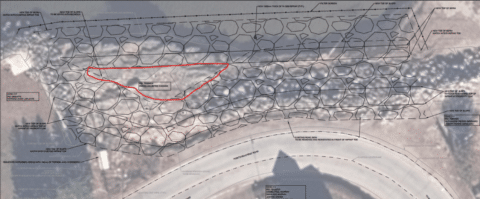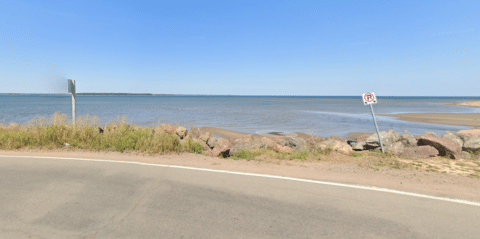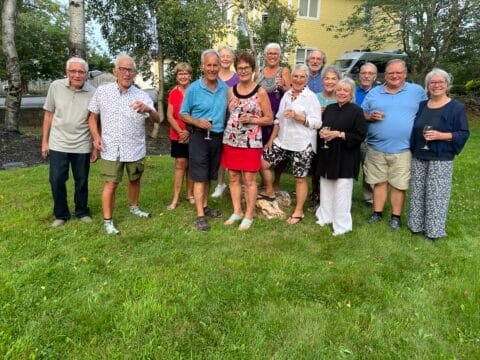- September2025
- Topic:
Letter to Premier Holt Parlee Beach Bacterial Contamination of August 30, 2025
- Source: RDASB
Parlee Beach Bacterial Contamination of August 30, 2025
LETTER SENT TO PREMIER HOLT
The Honourable Susan Holt
Premier of New Brunswick
Chancery Place, 675 King Street
Fredericton, NB E3B 1E9
Dear Premier Holt:
Subject: Immediate closure of Parlee Beach due to extreme
bacterial contamination
Premier Holt,
I am writing, once again, with grave concern regarding the most
recent Parlee Beach water-quality results. On August 30, 2025,
enterococci counts were reported at >24,196 MPN/100 mL in two
locations, with other samples at 10,462–15,531 MPN/100 mL. The
Health Canada guideline for marine waters is ≤70 MPN/100 mL for
a single sample.
This means Parlee Beach is currently experiencing contamination
levels that are over 300 times the safe limit. According to Health
Canada’s Guidelines for Canadian Recreational Water Quality
(Third Edition), the risk of illness increases exponentially as counts
rise. At these levels, nearly everyone immersed in the water is at
risk of gastrointestinal and other infections.
It is important to state clearly: this cannot be dismissed as a few
more birds than usual. Bird droppings do not explain bacterial
spikes of this magnitude. The only plausible cause is a significant
source of fecal contamination — most likely from human sewage,
stormwater inflows, or infrastructure failure.
This weekend is the Labour Day holiday, one of the busiest
swimming weekends of the year. Families and visitors will be in
the water, unaware of the severity of the risk. A simple “no
swimming advisory” is not sufficient when contamination is this
extreme.
I urge you to take the following immediate actions:
1. Close Parlee Beach to swimming until the source of
contamination is identified and corrected.
At these levels, leaving the beach open places the public at
significant, avoidable risk.
2. Direct a same-day investigation of potential causes —
including sewage bypasses, lift station failures, or resuspension of contaminated sediments. Did you conduct
any investigations after the first spill that was small
compared to this?
3. Implement same-day qPCR testing and immediate
advisories in line with Health Canada’s risk-based
recommendations. Waiting for next-day culture results is
not compatible with protecting public health during such
spikes.
4. Communicate transparently — publish all raw results,
methods, and the rationale for closures/advisories in real
time on a public dashboard.
Parlee Beach is a provincial icon, but its reputation and the health
of New Brunswick residents and visitors are at risk. Anything less
than decisive action in the face of 24,000+ enterococci
counts undermines public trust.
I ask you personally to review page 34 of the Health Canada
Guidelines (Marine waters: Enterococci), which explains the
exponential increase in risk with rising counts. The situation at
Parlee Beach now fits exactly the kind of high-risk scenario that
section warns about.
I look forward to your urgent response and to seeing immediate
protective measures taken.
Respectfully,
Brenda Ryan
108 Gould Beach Rd
Pointe-du-Chêne
902-293-9909
_____________________________________________________
Email from Don Fox on SEPT 26, 2025
I am writing to provide an update regarding the no-swimming
advisory issued on August 31, 2025, at Parlee Beach, which was
due to elevated Enterococcus levels observed across all five
sampling stations. Field observations when the samples were
collected, indicated calm conditions, low tide, slightly elevated
field turbidity, and the presence of gulls.
Microbial source tracking (DNA-based) analysis determined
bacteria were primarily avian/gulls, with a small contribution from
human sources. In addition, subsequent follow-up with the
Greater Shediac Sewerage Commission indicates the facility was
functioning properly, therefore the results were not caused by
release of raw sewage.
Results from the following days confirmed this was a transient
event and not a chronic issue. Thank you for your continued
attention and cooperation as we work to ensure the safety and
quality of the beach environment.
_____________________________________________________
CHATGPT ANALYSIS
Estimating Gull Contributions to Parlee Beach Enterococcus
Spike
This document provides a rough estimate of how many seagulls
(or their droppings) would be needed to generate the very high
Enterococcus counts recorded at Parlee Beach on August 30,
2025, when five supervised-area sites showed readings in the
10,000–24,000 MPN/100mL range.
Key Assumptions
Target concentration: 24,000 MPN/100 mL = 240,000 per liter.
Mixing volume at one sampling point: ~100,000 L (20 m
alongshore × 10 m offshore × 0.5 m depth).
Enterococcus in gull feces: ~10⁶–10⁸ CFU per gram (literature
range).
Mass per dropping: 0.5–2 g.
Defecation rate: ~3 droppings per gull per hour.
Per Site Calculation
Required organisms per site: 240,000/L × 100,000 L = 2.4 × 10¹⁰
CFU.
Scenario Droppings Needed Equivalent Gull-
Hours
Low-potency (10⁶
CFU/g, 1 g/drop)
24,000 drops ≈ 8,000 gulls·hour
Midpoint (10⁷
CFU/g, 1.5 g/drop)
1,600 drops ≈ 530 gulls·hour
High-potency (10⁸
CFU/g, 2 g/drop)
120 drops ≈ 40 gulls·hour
Across All Five Sites
If each of the five supervised sites experienced ~24,000 MPN/100
mL, the gull contribution estimates scale up proportionally:
Low-potency case: ~40,000 gulls·hour total.
Midpoint case: ~2,600 gulls·hour total.
High-potency case: ~200 gulls·hour total.
Interpretation
Depending on fecal potency and dilution assumptions, the spike
could require anything from hundreds to tens of thousands
of gulls actively defecating in the surf zone within a short
window. A midpoint estimate suggests ~500 gulls·hour per site,
or ~2,500 gulls·hour for the five-site supervised area.
However, the pattern observed on August 30—simultaneous,
extreme spikes at all five sites—is more consistent with a large
pulse input (stormwater surge, resuspension, or other source)
rather than gulls alone, which typically cause localized hot spots.















